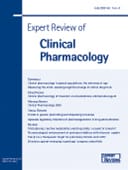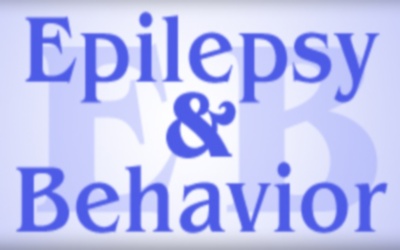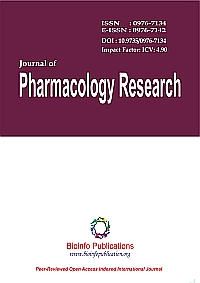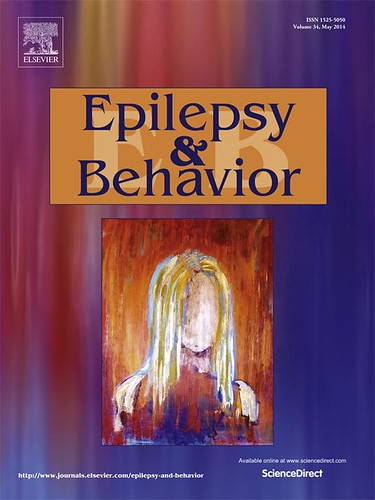“Neuronal migration is a fundamental process of brain development, and its disruption underlies devastating neurodevelopmental disorders. The transcriptional programs governing this process are relatively well characterized. However, how environmental cues instruct neuronal migration remains poorly understood. Here, we demonstrate that the cannabinoid CB 1 receptor is strictly required for appropriate pyramidal neuron migration in the developing cortex. Acute silencing of the CB 1 receptor alters neuronal morphology and impairs radial migration. Consequently, CB 1 siRNA-electroporated mice display cortical malformations mimicking subcortical band heterotopias and increased seizure susceptibility in adulthood. Importantly, rescuing the CB 1 deficiency-induced radial migration arrest by knockdown of the GTPase protein RhoA restored the hyperexcitable neuronal network and seizure susceptibility. Our findings show that CB 1 receptor/RhoA signaling regulates pyramidal neuron migration, and that deficient CB 1 receptor signaling may contribute to cortical development malformations leading to refractory epilepsy independently of its canonical neuromodulatory role in the adult brain.”
Category Archives: Epilepsy
Cannabinoids therapeutic use: what is our current understanding following the introduction of THC, THC:CBD oromucosal spray and others?

“The complexity of the endocannabinoid (eCB) system is becoming better understood and new drivers of eCB signaling are emerging. Modulation of the activities of the eCB system can be therapeutic in a number of diseases.
Research into the eCB system has been paralleled by the development of agents that interact with cannabinoid receptors. In this regard it should be remembered that herbal cannabis contains a myriad of active ingredients, and the individual cannabinoids have quite distinct biological activities requiring independent studies.
This article reviews the most important current data involving the eCB system in relation to human diseases, to reflect the present (based mainly on the most used prescription cannabinoid medicine, THC/CBD oromucosal spray) and potential future uses of cannabinoid-based therapy.
Expert commentary: From the different therapeutic possibilities, THC/CBD oromucosal spray has been in clinical use for approximately five years in numerous countries world-wide for the management of multiple sclerosis (MS)-related moderate to severe resistant spasticity.
Clinical trials have confirmed its efficacy and tolerability.
Other diseases in which different cannabinoids are currently being investigated include various pain states, Alzheimer’s disease, Parkinson’s disease, Huntington’s disease and epilepsy. The continued characterization of individual cannabinoids in different diseases remains important.”
The current status of artisanal cannabis for the treatment of epilepsy in the United States.

“The widespread patient use of artisanal cannabis preparations has preceded quality validation of cannabis use for epilepsy. Neurologists and cannabinoid specialists are increasingly in a position to monitor and guide the use of herbal cannabis in epilepsy patients. We report the retrospective data on efficacy and adverse effects of artisanal cannabis in Patients with medically refractory epilepsy with mixed etiologies in Washington State, California, and Maine. Clinical considerations, including potential risks and benefits, challenges related to artisanal preparations, and cannabinoid dosing, are discussed.
RESULTS:
Of 272 combined patients from Washington State and California, 37 (14%) found cannabis ineffective at reducing seizures, 29 (15%) experienced a 1-25% reduction in seizures, 60 (18%) experienced a 26-50% reduction in seizures, 45 (17%) experienced a 51-75% reduction in seizures, 75 (28%) experienced a 76-99% reduction in seizures, and 26 (10%) experienced a complete clinical response. Overall, adverse effects were mild and infrequent, and beneficial side effects such as increased alertness were reported. The majority of patients used cannabidiol (CBD)-enriched artisanal formulas, some with the addition of delta-9-tetrahydrocannabinol (THC) and tetrahydrocannabinolic acid (THCA). Four case reports are included that illustrate clinical responses at doses <0.1mg/kg/day, biphasic dose-response effects, the use of THCA for seizure prevention, the use of THC for seizure rescue, and the synergy of cannabinoids and terpenoids in artisanal preparations. This article is part of a Special Issue entitled “Cannabinoids and Epilepsy”.”
The Direct Actions of Cannabidiol and 2-Arachidonoyl Glycerol at GABAA Receptors.

“Cannabidiol (CBD) is a major non-intoxicating component of cannabis and possesses anti-epileptic, anxiolytic and anti-hyperalgesic properties.
Despite evidence that some endogenous and synthetic cannabinoids interact with GABAA receptors, no-one has yet investigated the effects of CBD.
Here we used two-electrode voltage clamp electrophysiology to compare the actions of CBD with those of the major central endocannabinoid, 2-arachidonoyl glycerol (2-AG) on human recombinant GABAA receptors (synaptic α1-6βg2 and extrasynaptic α4β2δ) expressed on Xenopus oocytes.
Taken together these results reveal a mode of action of CBD on specifically configured GABAA receptors that may be relevant to the anticonvulsant and anxiolytic effects of the compound.”
An Australian nationwide survey on medicinal cannabis use for epilepsy: History of antiepileptic drug treatment predicts medicinal cannabis use.

“Epilepsy Action Australia conducted an Australian nationwide online survey seeking opinions on and experiences with the use of cannabis-based products for the treatment of epilepsy. The survey was promoted via the Epilepsy Action Australia’s main website, on their Facebook page, and by word of mouth. The survey consisted of 39 questions assessing demographics, clinical factors, including diagnosis and seizure types, and experiences with and opinions towards cannabis use in epilepsy. A total of 976 responses met the inclusion criteria.
Results show that 15% of adults with epilepsy and 13% of parents/guardians of children with epilepsy were currently using, or had previously used, cannabis products to treat epilepsy. Of those with a history of cannabis product use, 90% of adults and 71% of parents reported success in reducing seizure frequency after commencing cannabis products. The main reasons for medicinal cannabis use were to manage treatment-resistant epilepsy and to obtain a more favorable side-effect profile compared to standard antiepileptic drugs.
The number of past antiepileptic drugs tried was a significant predictor of medicinal cannabis use in both adults and children with epilepsy. Fifty-six percent of adults with epilepsy and 62% of parents/guardians of children with epilepsy expressed willingness to participate in clinical trials of cannabinoids. This survey provides insight into the use of cannabis products for epilepsy, in particular some of the likely factors influencing use, as well as novel insights into the experiences of and attitudes towards medicinal cannabis in people with epilepsy in the Australian community.”
Social correlates of health status, quality of life, and mood states in patients treated with cannabidiol for epilepsy.

“Social characteristics, such as socioeconomic status and race/ethnicity, play a role in the treatment and outcomes of patients with epilepsy (PWE), but little is known about how these factors affect patients receiving cannabidiol (CBD) to treat seizures. This exploratory study examined the sociodemographic profile of patients treated with CBD (n=80) and associations between social factors and patient-centered outcomes – overall health status, Quality of Life in Epilepsy-89 (QOLIE-89), and Profile of Mood States (POMS) – in this population.
Associations were examined using Pearson correlations and multiple ordinary-least-squares regression (alpha=0.1). The sample was predominantly white (96%) and non-Hispanic/Latino (96%); 76% of patients had family incomes of $40,000+/year. Some patients/families reported experiencing food scarcity (13%), not being able to make ends meet (6%), or not being able to afford antiepileptic medications (8%). The patients’ health ratings declined with age and income (p≤0.014), and there was a statistically significant interaction (p<0.055) between these variables: for example, a higher-income 10-year-old had a predicted health rating of 3 (“very good”), followed by a higher-income 40-year-old with a rating of 2 (“good”), a low-income 10-year-old with a rating of 1 (“fair”), and a low-income 40-year-old with a rating of 0 (“poor”).
This is the first study reporting the social profile of patients taking pharmaceutical grade CBD for the treatment of epilepsy. The results suggest that despite free access to this treatment some patients may not be accessing CBD because of their socioeconomic situation or race/ethnicity. Larger, diverse samples and longitudinal data are needed to more accurately model social factors and patient-centered outcomes in PWE receiving CBD.”
Cannabinoids and epilepsy — Introduction.

“Over the past five years, the lay press and families of children with catastrophic epilepsies popularized the use of cannabis and cannabinoids to treat seizures. Many state legislatures have responded to the pressure from lay groups and have legalized medical cannabis, which is now available to a majority of people in the United States. Patients throughout the world are also obtaining and using cannabinoids to treat their epilepsy. There is an enormous dissociation between the widespread use of cannabis-based therapies to treat diverse epilepsies and our understanding about the efficacy and safety of different cannabinoids in treating different epilepsy syndromes.” http://www.epilepsybehavior.com/article/S1525-5050(17)30042-2/abstract
Cannabis cultivation: Methodological issues for obtaining medical-grade product.

“As studies continue to reveal favorable findings for the use of cannabidiol in the management of childhood epilepsy syndromes and other disorders, best practices for the large-scale production of Cannabis are needed for timely product development and research purposes. The processes of two institutions with extensive experience in producing large-scale cannabidiol chemotype Cannabis crops-GW Pharmaceuticals and the University of Mississippi-are described, including breeding, indoor and outdoor growing, harvesting, and extraction methods. Such practices have yielded desirable outcomes in Cannabis breeding and production: GW Pharmaceuticals has a collection of chemotypes dominant in any one of eight cannabinoids, two of which-cannabidiol and cannabidivarin-are supporting epilepsy clinical trial research, whereas in addition to a germplasm bank of high-THC, high-CBD, and intermediate type cannabis varieties, the team at University of Mississippi has established an in vitro propagation protocol for cannabis with no detectable variations in morphologic, physiologic, biochemical, and genetic profiles as compared to the mother plants. Improvements in phytocannabinoid yields and growing efficiency are expected as research continues at these institutions.”
Therapeutic effects of cannabinoids in animal models of seizures, epilepsy, epileptogenesis, and epilepsy-related neuroprotection.

“The isolation and identification of the discrete plant cannabinoids in marijuana revived interest in analyzing historical therapeutic claims made for cannabis in clinical case studies and anecdotes. In particular, sources as old as the 11th and 15th centuries claimed efficacy for crude marijuana extracts in the treatment of convulsive disorders, prompting a particularly active area of preclinical research into the therapeutic potential of plant cannabinoids in epilepsy.
Since that time, a large body of literature has accumulated describing the effects of several of the >100 individual plant cannabinoids in preclinical models of seizures, epilepsy, epileptogenesis, and epilepsy-related neuroprotection. We surveyed the literature for relevant reports of such plant cannabinoid effects and critically reviewed their findings.
We found that acute CB1R agonism in simple models of acute seizures in rodents typically produces anti-convulsant effects whereas CB1R antagonists exert converse effects in the same models. However, when the effects of such ligands are examined in more complex models of epilepsy, epileptogenesis and neuroprotection, a less simplistic narrative emerges.
Here, the complex interactions between (i) brain regions involved in a given model, (ii) relative contributions of endocannabinoid signaling to modulation of synaptic transmission in such areas, (iii) multi-target effects, (iv) cannabinoid type 1 and type 2 receptor signaling interactions and, (v) timing, (vi) duration and (vii) localization of ligand administration suggest that there is both anti-epileptic therapeutic potential and a pro-epileptic risk in up- and down-regulation of endocannabinoid signaling in the central nervous system.
Factors such receptor desensitization and specific pharmacology of ligands used (e.g. full vs partial agonists and neutral antagonists vs inverse agonists) also appear to play an important role in the effects reported.
Furthermore, the effects of several plant cannabinoids, most notably cannabidiol (CBD) and cannabidavarin (CBDV), in models of seizures, epilepsy, epileptogenesis, and neuroprotection are less ambiguous, and consistent with reports of therapeutically beneficial effects of these compounds in clinical studies.
However, continued paucity of firm information regarding the therapeutic molecular mechanism of CBD/CBDV highlights the continued need for research in this area in order to identify as yet under-exploited targets for drug development and raise our understanding of treatment-resistant epilepsies.
The recent reporting of positive results for cannabidiol treatment in two Phase III clinical trials in treatment-resistant epilepsies provides pivotal evidence of clinical efficacy for one plant cannabinoid in epilepsy.
Moreover, risks and/or benefits associated with the use of unlicensed Δ9-THC containing marijuana extracts in pediatric epilepsies remain poorly understood.
Therefore, in light of these paradigm-changing clinical events, the present review’s findings aim to drive future drug development for newly-identified targets and indications, identify important limitations of animal models in the investigation of plant cannabinoid effects in the epilepsies, and focuses future research in this area on specific, unanswered questions regarding the complexities of endocannabinoid signaling in epilepsy.”
Cannabinoids in treatment-resistant epilepsy: A review.

“Treatment-resistant epilepsy (TRE) affects 30% of epilepsy patients and is associated with severe morbidity and increased mortality.
Cannabis-based therapies have been used to treat epilepsy for millennia, but only in the last few years have we begun to collect data from adequately powered placebo-controlled, randomized trials (RCTs) with cannabidiol (CBD), a cannabis derivative.
Previously, information was limited to case reports, small series, and surveys reporting on the use of CBD and diverse medical marijuana (MMJ) preparations containing: tetrahydrocannabinol (THC), CBD, and many other cannabinoids in differing combinations.
These RCTs have studied the safety and explored the potential efficacy of CBD use in children with Dravet Syndrome (DS) and Lennox-Gastaut Syndrome (LGS).
The role of the placebo response is of paramount importance in studying medical cannabis products given the intense social and traditional media attention, as well as the strong beliefs held by many parents and patients that a natural product is safer and more effective than FDA-approved pharmaceutical agents.
We lack valid data on the safety, efficacy, and dosing of artisanal preparations available from dispensaries in the 25 states and District of Columbia with MMJ programs and online sources of CBD and other cannabinoids. On the other hand, open-label studies with 100mg/ml CBD (Epidiolex®, GW Pharmaceuticals) have provided additional evidence of its efficacy along with an adequate safety profile (including certain drug interactions) in children and young adults with a spectrum of TREs.
Further, Phase 3 RCTs with Epidiolex support efficacy and adequate safety profiles for children with DS and LGS at doses of 10- and 20-mg/kg/day. This article is part of a Special Issue titled “Cannabinoids and Epilepsy”.”
